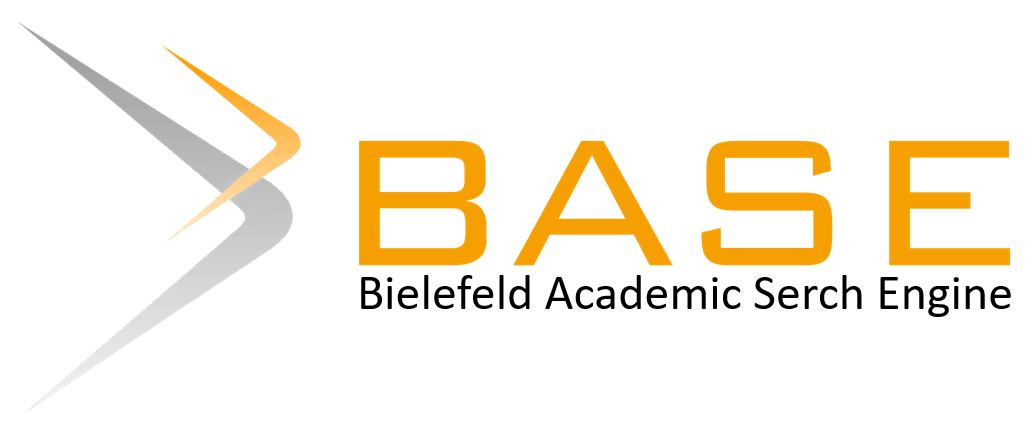Kawasaki Disease and Aneurysm of Coronary Artery in Children
DOI:
https://doi.org/10.30595/hmj.v8i1.26307Keywords:
Aneurysm, Children, Coronary artery, Kawasaki diseaseAbstract
Kawasaki infection (KD) is an intense, self-restricted vasculitis of obscure etiology that occurs predominantly in babies and small children. KD is a disease of youth, as 80% of cases happen between the ages of half a year and 5 years, with a median age of 2 to 3 years. Males are 1-6 times more likely to be influenced by KD. The ailment influences offspring of all ethnic groups, with the highest frequency occurring in offspring of Asian descent. A 3-year-old kid, with fever for 11 days before the diagnosis. Fever continues to spike. The patient got treated with anti-toxins before, yet the fever won't resolve. His eyes look red on the third day of fever. Fever followed by redness in the entire body that began from crotch to trunk, vanished in 7 days of fever, redness, enlarged in hands and feet, additionally lymph hub broadening in neck with width 1.5 cm, non-purulent, the lips was red and strawberry tongue show up in 6 days of fever and pilling skin while redness in hands and feet settled. Research facility assessment discovered an increase in leucocytes, ESR, and CRP, and a normal Electrocardiogram (ECG). Echocardiography revealed an aneurysm right coronary artery and an aneurysm of the left coronary artery. The board of patients incorporates intravenous gamma globulin, ibuprofen for therapy, echocardiography assessment, and therapy support. Long-term follow-up overseeing Kawasaki disease is the way to screen Coronary Arterial Aneurysm (CAA) complications, which are the most serious complications of KD, and are a significant reason for morbidity and mortality associated with the infection.
References
1. Greco A, Virgilio A, Rizzo MI, Tombolini M, Gallo A, Fusconi M, et al. Review Kawasaki disease: An Evolving paradigm. Autoimmunity review. 2015;14: 703-9.
2. Uehara R, Yashiro M, Nakamura Y, Yanagawa H. Parents with a history of Kawasaki disease whose child also had the same disease. Pediatrics International. 2011;53:511-4.
3. McCrindle BW, Rowley A, Newburger J, Burns J, Bolger AF, Gewitz M, et al.Diagnosis, treatment, and long-term management of Kawasaki disease. Circulation. 2017;135:927-99.
4. Eleftheriou D, Levin M, Shingadia D, Tulloh R, Klein NJ, Brogan PA. Management of Kawasaki disease. Arch Dis Child 2014;99:74-83.
5. Rowley AH, Shulman ST. Editorial commentary: missing the forest for the trees: respiratory viral assays in patients with Kawasaki disease. Clin Infect Dis. 2013;56:65-6.
6. Burns JC, Franco A. The immunomodulatory effects of intravenous immunoglobulin therapy in Kawasaki disease. Expert Rev Clin Immunol. 2015;11:819–25.
7. Kobayashi T, Kobayashi T, Morikawa A, Ikeda K, Seki M, Shimoyama S, et al. Efficacy of intravenous immunoglobulin combined with prednisolone following resistance to initial intravenous immunoglobulin treatment of acute Kawasaki disease. The Journal of Pediatrics. 2013;163:521-6.
8. Lee SB, Choi HS, Son S. Cardiac Function in Kawasaki Disease Patients with Respiratory Symptoms. Korean circulation journal. 2015;45:317-24.
9. Kitano N, Suzuki H, Takeuchi T. Epidemiologic features and prognostic factors of coronary artery lesions associated with Kawasaki disease based on a 13-year cohort of consecutive cases identified by complete enumeration surveys in Wakayama, Japan. Journal of epidemiology / Japan Epidemiological Association. 2014;24:427-34.
10. Lega JC, Bozio A, Cimaz R, Veyrier M, Floret D, Ducreux C, et al. Extracoronary echocardiographic findings as predictors of coronary artery lesions in the initial phase of Kawasaki disease. Arch Dis Child. 2013;98:97-102.
11. Kocabaş BA, Karbuz A, Karadeniz C, Çiftçi O, Özdemir H, Bolkent M. et al. Another face of Kawasaki disease. The Turkish Journal of Pediatrics. 2014; 56: 392-8.
12. Kang J, Hong S, Seo IA, Kwak MH, Cho S, Kim D, et al. Early Detection of Kawasaki Disease in Infants. Korean Circulation Journal. 2015; 10: 510-5.
Downloads
Published
Issue
Section
License
Copyright (c) 2025 Gina Noor Djalilah, Muhammad Perdana Airlangga , irma kartikasari, Mahrus A Rahman , I Ketut Alit Utamayasa, Teddy Ontoseno

This work is licensed under a Creative Commons Attribution 4.0 International License.
For submission of manuscripts to the Herb-Medicine Journal, the authors must certify that:
I have been authorized by my co-author to submit the manuscript to the Herb-Medicine Journal
I hereby declare, on behalf of myself and my co-authors, that:
The submitted manuscript is original work and has not been published in another peer-reviewed journal or is being considered for publication by another journal. Also, the manuscript does not infringe any existing copyright or other third party rights.
The manuscript does not contain material that may violate the law, slander, or SARA, in any way, violates the terms and conditions contained in the agreement
I/we have taken care that the scientific knowledge and all other statements contained in the manuscript are in accordance with authentic facts and formulas and will not, if followed appropriately, harm the user
No liability shall be assumed by Herb-Medicine Journal, its staff or members of the editorial board for any injury and/or damage to persons or property as a matter of product liability, negligence or otherwise, or from the use or operation of any method, product instructions, advertising , or ideas contained in publications by the Herb-Medicine Journal
Authors who publish in the Herb-Medicine Journal certify that all authors have read and agree to the contents of the Cover Letter or the Terms and Conditions. Plagiarism is strictly prohibited, and by submitting a manuscript for publication, the author agrees that the publisher has the legal right to take appropriate action against the author, if plagiarism or false information is found. Once submitted to the Herb-Medicine Journal, authors will not withdraw their manuscript at any stage prior to publication.
The author owns the copyright and grants the journal rights for first publication with the work simultaneously licensed under a Creative Commons Attribution License which allows others to share the work with acknowledgment of the work's authorship and initial publication in this journal.
Authors may enter into separate additional contractual agreements for the non-exclusive distribution of the published journal version of the work (for example, posting it to an institutional repository or publishing it in a book), with acknowledgment of its initial publication in this journal.
Authors are permitted and encouraged to post their work online (for example, in institutional repositories or on their websites) prior to and during the submission process, as this can lead to productive exchanges, as well as earlier and larger citation of published work (See The Effects of Open Access).
Untuk pengiriman naskah ke Herb-Medicine Journal, penulis harus menyatakan bahwa:
- Saya telah diberikan otorisasi oleh rekan penulis saya untuk memasukkan naskah ke Herb-Medicine Journal
- Saya dengan ini menyatakan, atas nama saya dan rekan penulis saya, bahwa:
- Naskah yang dikirimkan adalah karya asli dan belum pernah diterbitkan dalam jurnal peer-review lain atau sedang dipertimbangkan untuk diterbitkan oleh jurnal lain. Serta, naskah tidak melanggar hak cipta yang ada atau hak pihak ketiga lainnya.
- Naskah tidak mengandung materi yang mungkin melanggar hukum, memfitnah, atau SARA, dengan cara apa pun, melanggar syarat dan ketentuan yang tercantum dalam perjanjian
- Saya / kami telah berhati-hati bahwa pengetahuan ilmiah dan semua pernyataan lain yang terkandung dalam naskah sesuai dengan fakta dan formula otentik dan tidak akan, jika diikuti dengan tepat, merugikan pengguna
- Tidak ada tanggung jawab yang ditanggung oleh Herb-Medicine Journal, stafnya atau anggota dewan editorial untuk setiap cedera dan/atau kerusakan pada orang atau properti sebagai masalah pertanggungjawaban produk, kelalaian atau sebaliknya, atau dari penggunaan atau pengoperasian metode, produk apa pun instruksi, iklan, atau ide yang terkandung dalam publikasi oleh Herb-Medicine Journal
Penulis yang menerbitkan dalam Herb-Medicine Journal menyatakan bahwa semua penulis telah membaca dan menyetujui isi Surat Pengantar atau Syarat dan Ketentuan. Plagiarisme dilarang keras, dan dengan menyerahkan naskah untuk publikasi, penulis setuju bahwa penerbit memiliki hak hukum untuk mengambil tindakan yang pantas terhadap penulis, jika ditemukan plagiarisme atau informasi palsu. Setelah diserahkan ke Herb-Medicine Journal, penulis tidak akan menarik naskah mereka pada tahap apa pun sebelum dipublikasikan.
Penulis memiliki hak cipta dan memberikan hak jurnal untuk publikasi pertama dengan karya yang secara simultan dilisensikan di bawah Lisensi Creative Commons Attribution yang memungkinkan orang lain untuk berbagi karya dengan pengakuan kepengarangan karya dan publikasi awal dalam jurnal ini.
Penulis dapat membuat perjanjian kontrak tambahan yang terpisah untuk distribusi non-eksklusif versi jurnal yang diterbitkan dari karya tersebut (misalnya, mempostingnya ke repositori institusional atau menerbitkannya dalam sebuah buku), dengan pengakuan atas publikasi awalnya di jurnal ini.
Penulis diizinkan dan didorong untuk memposting pekerjaan mereka secara online (misalnya, dalam repositori institusional atau di situs web mereka) sebelum dan selama proses pengajuan, karena dapat menyebabkan pertukaran yang produktif, serta kutipan yang lebih awal dan lebih besar dari karya yang diterbitkan (Lihat The Effect of Open Access).













